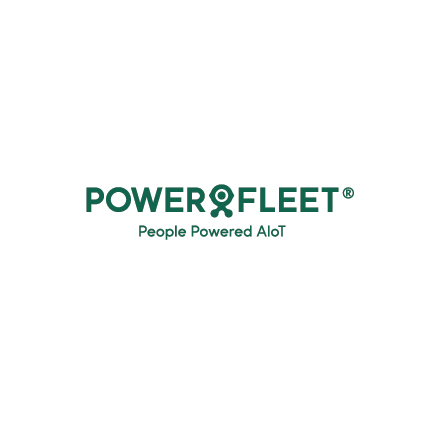Telematics are quickly becoming a must-have for businesses to remain competitive. From driver safety to task scheduling, telematics enable fleets to reduce costs, improve efficiency, and keep employees happy. But without proper management, they can quickly become a waste of money and a hassle for fleet managers and drivers.
Let’s look at how to get the most value out of your telematics solutions and maximize your return on investment.
Telematics can quickly become a time and money suck without proper management—here's how to get the most value from your telematics. Compartir en XEstablish Your Goals
Start by establishing clear goals for your telematics program. Then, define a set of tangible metrics for each goal that you can measure and improve. For example, your goal might be to lower fuel costs. In that case, you might track and optimize each driver’s average miles per gallon or try to minimize the number of miles driven on each route.
In addition to goals and metrics, it’s essential to have a plan to address and improve the metrics over time. For instance, you might reward drivers with the best fuel economy and retrain drivers with the worst. Or, you might reassign or rearrange driving routes to minimize the number of miles per vehicle and lower fuel costs that way.
Keep in mind that the goal-setting process may involve trade-offs between different stakeholders. For example, owners may want to maximize utilization, while marketing teams may focus on customer service. But, of course, maximum fleet utilization could hurt customer service if there aren’t any vehicles available for an emergency call.
Manage the Program
Telematics programs should have a dedicated manager and analyst (or multiple in the case of a larger fleet). Managers should spearhead everything from the installation process to presenting reports. Meanwhile, analysts should regularly collect data, develop actionable insights, and condense the data into an easy-to-understand report.
Since telematics goals and metrics affect various parts of the business, many fleets establish a steering committee that consists of representatives from operations, sales, marketing, and other areas. The committee meets regularly to review fleet performance, discuss telematics reports, and agree on future actions—especially when they impact multiple areas.

Powerfleet Vista makes it easy to manage your fleet. Source: Powerfleet
Powerfleet shortcuts the process by automatically converting raw data into actionable insights. Our dashboard combines real-time dashcam video and GPS with key performance indicators that you can use to track your fleet’s cost, safety, and performance. You can also access deep insights into utilization, fuel levels, and EV powertrains.
Collaborate with Vendors
Strong vendor relationships are essential for a successful telematics program. During the early stages, vendors help you install, compile, access, and interpret the data from telematics solutions. They may also help you set up custom dashboards showing you KPIs, preventing the need to build expensive and time-consuming custom dashboards.
If you still haven’t chosen a vendor, look for the following:
- Experience: Look for vendors with a proven track record. If you buy from a new startup, they could be out of business within a few years, leaving you with useless technology.
- Onboarding: Vendors should provide installation and training to help drivers understand how to use telematics, as well as help managers access and interpret the data.
- Analytics: The best vendors provide analytics dashboards out of the box. That way, you don’t have to hire a data scientist to build a custom dashboard using raw data.
- Data: Look for vendors that offer access to raw telematics data. That way, you avoid vendor lock-in and are free to take the data to another provider if you’re not happy.
- Support: Choose vendors that offer ongoing customer support, which is essential when problems arise or when you’re looking to upgrade or extend an existing system.
Powerfleet has been around for more than 25 years, with 426,000 units worldwide. We have helped everyone from Fortune 500 companies to small mom-and-pop businesses improve their fleet performance. We offer an extensive installation and onboarding process to ensure that drivers and managers understand how to use the technology and data.
Plan for the Future
Fleets are constantly adapting to changing regulations and market trends. For example, many fleets are transitioning to electric vehicles (EVs) to reduce their carbon footprint and realize significant cost savings. However, these changes require extensive planning when it comes to vehicle replacements—and planning for telematics.
Some telematics solutions may not integrate with electric vehicle drivetrains, limiting must-have insights on charging activity and range. So, when building your telematics program, it’s critical to ensure that the technology will support EVs and other changes to your fleet over time. Otherwise, you could be missing out on mission-critical data.
In addition to technical compatibility, you may need to adapt your goals over time to address new challenges that arise. For example, a spike in fuel prices could make fuel economy far more critical than other goals—even if it’s only for a short time. Therefore, it’s essential to build flexibility into your planning sessions to address challenges as they arise.
The Bottom Line
Telematics is quickly becoming a must-have for fleets of every size. But, of course, there’s a lot more to the process than just buying and installing the technology. Proper management is critical to shortening your payback period and maximizing your return on investment. By following the advice above, you can dramatically increase your success.
If you’re interested in adding telematics to your fleet, contact us to schedule a free consultation and learn how we can help.






